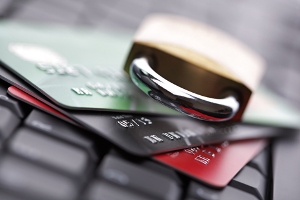13 ways Protect your Credit Cards from Fraud
Here are a number of ways you can protect your credit cards from fraud.
 1. Keep a sharp eye on your credit card accounts. Read through the purchases for every monthly statement to see if any unfamiliar or odd items show up. Don’t just skip past small purchases; a charge for $9.95 could still be fraudulent. A crook knows you’re less likely to pay attention to small numbers. Consider checking your statements online weekly or even better, download your banks mobile app and check them daily.
1. Keep a sharp eye on your credit card accounts. Read through the purchases for every monthly statement to see if any unfamiliar or odd items show up. Don’t just skip past small purchases; a charge for $9.95 could still be fraudulent. A crook knows you’re less likely to pay attention to small numbers. Consider checking your statements online weekly or even better, download your banks mobile app and check them daily.
2. Immediately contact your bank. By law, credit card companies have to give you 60 days to refute unauthorized charges. And with “zero liability policies” fraudulent charges are often squashed as long as a year later. However the sooner you contact the bank upon suspecting fraudulent activity, the more likely the credit card issuer will reverse the fraudulent charges. The compromised account should be closed and a new card and account issued and opened, respectively.
3. Credit card monitoring services. These are free or fee based and often included in identity theft protection services and will keep an eye on your credit score as well as inquiries for new credit, and balance charges.
4. Implement activity alerts. Your accounts should have these; the alerts can come via e-mail or text for various card related activity, such as based on amount or frequency. You can text messages for every card present (in person) and card not present (online) transaction.
5. Go virtual. If your bank offers it, use a virtual credit card number online. These are card numbers that change every time you use them.
6. Skimming awareness. Credit card skimming is when a thief sabotages the card reader (such as an ATM’s), allowing him to get your card’s data. Look for signs of tampering like loose parts on the keypad or a camera looking down on the console. Conceal the keypad with your other hand when you enter your PIN. A skimmer can also use a handheld device and skim your card right in his hand. Be very careful whom you give your card to for a purchase.
7. Don’t save. That is, your credit card information with an online merchant. Instead, manually enter it every time you shop. The hassle of this means more security.
8. Financial tracking apps. These are free and can alert the cardholder to odd activity, such as an unusually large purchase. I like Mint by Intuit. BillGuard is great too.
9. Be alert. In addition to unauthorized charges showing on your card’s statement, be on the lookout for strange bank account withdrawals, collection notices for debts you’ve never heard of, being rejected for credit applications, among other red flags.
10. Shop securely on Wi-Fi. Use an encrypting software such as Hotspot Shield VPN. VPN is virtual private network and will prevent snoops and crooks from spying on your online activities.
11. Use reputable sites. Make purchases only from reputable sites you’ve already shopped at or otherwise trustworthy sites like eBay (check sellers ratings) and Amazon.
12. Updates. Set your computer’s or device’s critical security patches to automatically update; these patches help correct newly-discovered vulnerabilities. And speaking of updates, make sure you update your antivirus and your browser to the latest version, to correct vulnerabilities.
13. HTTPS. The HTTPS at the beginning of the browser before the URL, means that the site is secure. Never input your credit card number on a site that does not have the HTTPS in the URL field. The HTTPS means there’s encryption on that particular page.
Robert Siciliano is an Identity Theft Expert to Hotspot Shield VPN. He is the author of 99 Things You Wish You Knew Before Your Identity Was Stolen See him discussing internet and wireless security on Good Morning America. Disclosures.


























